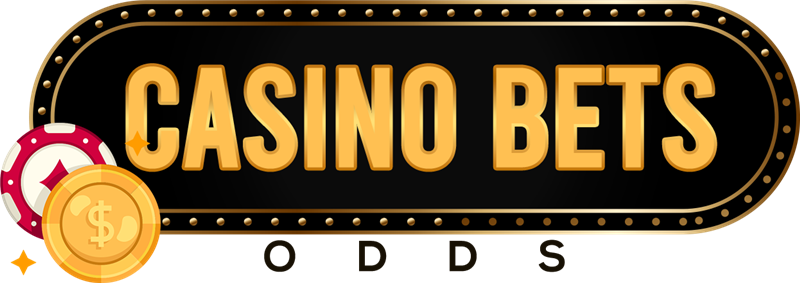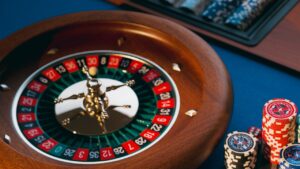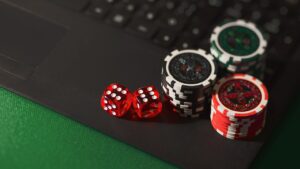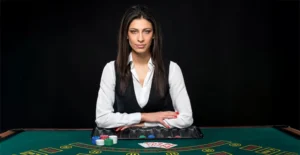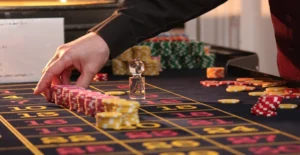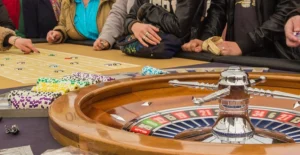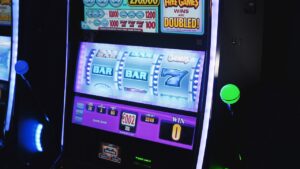Hitting green in roulette is a moment that can bring a mix of excitement and, for some, a touch of dread, depending on your bet. It’s the pocket that stands out, literally and figuratively, on the felt. In American roulette, you’ve got two green pockets: the single zero (0) and the double zero (00). European roulette simplifies this with just one green pocket, the single zero (0).
What Happens If You Hit Green in Roulette?
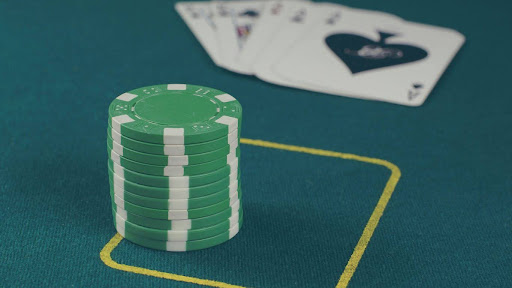
When the ball lands on green, the outcome for your bet hinges entirely on what you wagered on. If you placed a bet directly on ‘0’ or ’00’ (a ‘straight up’ bet), and the ball lands there, congratulations! You’ve hit a single number, and the payout is typically 35 to 1 for European roulette and 36 to 1 for American roulette, reflecting the odds. This means a $10 bet could net you $350 or $360, respectively.
However, if you made an ‘outside bet’ – like betting on red or black, odd or even, or high or low numbers – hitting green is not what you want to see. These bets cover a large portion of the numbers on the wheel, but they specifically exclude the green pockets. So, if the ball lands on 0 or 00, your outside bet loses. It’s a stark reminder of the house edge built into the game. For instance, betting on red means you lose if the ball lands on black or green.
The presence of the green pockets, especially the double zero in American roulette, is what gives the casino its edge. It’s a small but significant detail that shifts the probabilities in favor of the house over the long run.
Here’s a quick rundown of what happens:
- Straight Up Bet on Green (0 or 00): If you bet on a specific green number and it hits, you win with a high payout (35:1 or 36:1).
- Split Bet on 0 and 00 (American Roulette): Betting on both green pockets with a split bet increases your chances slightly, with a payout adjusted accordingly.
- Outside Bets (Red/Black, Odd/Even, High/Low): If the ball lands on green, these bets lose.
- Column or Dozen Bets: These bets also lose if the ball lands on green, as the green pockets are not included in these selections.
Understanding these outcomes is key to playing roulette, whether you’re at a physical casino or enjoying a game of card roulette. It’s all about knowing the risks and rewards associated with each type of wager.
Understanding the Green Spaces: 0 and 00 on the Wheel
The roulette wheel, with its spinning ball and numbered pockets, is a familiar sight in casinos. But have you ever stopped to think about those distinct green spaces? They’re more than just a splash of color; they play a significant role in the game’s mechanics and the odds you face. In most roulette variations, you’ll find at least one green pocket, typically marked with a ‘0’. American roulette, however, adds another layer of complexity with a second green pocket, the ’00’.
These green pockets are unique because they don’t fall into the standard categories of red or black, nor do they align with odd or even numbers. This distinction is key to how the game operates and how the house maintains its advantage. When the ball lands on either the 0 or 00, it changes the outcome for many types of bets.
Here’s a quick look at the green pockets in different roulette types:
- European Roulette: Features a single green pocket labeled ‘0’.
- American Roulette: Features two green pockets, labeled ‘0’ and ’00’.
The presence of these green spaces is the primary reason the casino has a built-in edge. Without them, the game would be much closer to a 50/50 proposition for certain bets, which isn’t ideal for the house. The specific placement and number of green pockets directly influence the overall probability of winning and losing.
The green pockets, 0 and 00, are the casino’s built-in advantage. They exist outside the typical red/black and odd/even classifications, fundamentally altering the odds for many bets placed on the table. Understanding their impact is the first step to grasping roulette strategy.
When you place a bet, say on red, and the ball lands on green, your bet is typically lost. This is a straightforward consequence of the green pockets not being red. The same applies if you bet on an odd and the ball lands on 0 (which is neither odd nor even). This is why betting on a single number, including the green ones, offers a higher payout – the risk is greater. You can explore a roulette payout table to see these differences clearly. The inclusion of the 00 in American roulette, compared to the single 0 in European roulette, effectively doubles the house edge, making the game slightly less favorable for players in the long run.
Probability Basics for What Happens if You Hit Green in Roulette
When you’re playing roulette, understanding the odds is pretty important, especially when it comes to those green pockets. It’s not just about luck; there’s some math behind it all.
First off, let’s talk about the wheels. You’ve got the American version, which has 38 pockets in total. Two of these are green: the ‘0’ and the ’00’. Then there’s the European or French wheel, which has 37 pockets, with just one green pocket, the ‘0’. This difference might seem small, but it actually changes the odds.
Here’s a quick breakdown:
- American Roulette: With 38 pockets and 2 green ones, your chance of hitting green on a single spin is 2 out of 38, or about 5.26%. This is why the house edge is a bit higher on this wheel.
- European/French Roulette: With 37 pockets and only 1 green one, your chance of hitting green is 1 out of 37, which is about 2.70%. This makes it a bit more player-friendly.
The key takeaway is that hitting green is less likely than hitting any other single number because there are fewer green pockets on the wheel.
Think about it this way:
- If you bet on red or black, you have 18 numbers to choose from. That’s an 18 out of 38 chance (American) or 18 out of 37 (European).
- If you bet on odd or even, it’s the same deal – 18 numbers.
- If you bet on a specific number (like 17), you have a 1 in 38 or 1 in 37 chance.
Betting on green is like betting on any single number, but with fewer options available. This lower probability is exactly why the payouts are higher if you do manage to land on green. It’s a riskier bet, but the reward can be significant. You can find more about different roulette game types and how these probabilities play out.
The presence of the green pockets, particularly the ’00’ in American roulette, is the primary reason for the casino’s built-in advantage. These pockets don’t align with common outside bets like red/black or odd/even, meaning if the ball lands there, those bets lose, and the casino profits.
What Happens If You Hit Green in Roulette: Straight Bet Payouts
When the roulette ball lands on one of the green pockets, specifically the ‘0’ or ’00’ in American roulette, it triggers a specific outcome for bets placed directly on those numbers. A straight bet, also known as a single number bet, is when you place your chip on a single number. If you bet on ‘0’ and the ball lands on ‘0’, or you bet on ’00’ and the ball lands on ’00’, you win.
The payout for a successful straight bet on a green number is the same as for any other single number on the wheel: 35 to 1. This means for every dollar you wager, you receive 35 dollars back in winnings, plus your original dollar bet is returned. So, a $10 bet on ‘0’ that hits would pay out $350 in winnings, and you’d get your $10 back, for a total of $360.
Here’s a quick look at the payouts for a straight bet on green:
| Bet Type | Payout Ratio | Example ($10 Bet) | Total Return ($10 Bet) |
| Straight on ‘0’ | 35 to 1 | $350 winnings | $360 |
| Straight on ’00’ | 35 to 1 | $350 winnings | $360 |
It’s important to remember that this payout applies only if you specifically bet on the green number that wins. If the ball lands on green and you bet on red, black, odd, even, or any other outside bet, your bet loses. The green pockets are essentially the casino’s advantage, as they reduce the odds for many common bets.
While betting directly on green offers a substantial payout if successful, it’s a high-risk, high-reward scenario. The probability of the ball landing on a specific green number is relatively low compared to other outcomes on the wheel.
How Green Affects Other Bets
When the roulette ball lands on one of the green pockets, specifically the ‘0’ or ’00’ in American roulette, it significantly impacts bets that don’t directly target these numbers. For outside bets like Red/Black, Odd/Even, or High/Low, hitting green usually means the house wins. These bets cover roughly half the numbers on the wheel, but the green spaces are excluded from these categories. So, if the ball lands on green, all these outside bets lose.
Column and Dozen bets also suffer when green appears. These bets cover a third of the numbers on the wheel. While they don’t directly include ‘0’ or ’00’ in their primary coverage, the presence of green effectively removes those pockets from the potential winning outcomes for these bets, leading to a loss for anyone who placed a wager on them.
Here’s a quick rundown:
- Red/Black Bets: Lose if green hits.
- Odd/Even Bets: Lose if green hits.
- High/Low Bets: Lose if green hits.
- Column Bets: Lose if green hits.
- Dozen Bets: Lose if green hits.
The presence of the green pockets is precisely what creates the house edge in roulette. Without them, the game would be much closer to a fair coin toss for many bets. The casino’s advantage comes from the fact that these green numbers are not covered by the majority of popular bets, yet they are part of the total number of outcomes.
The odds of hitting green are lower than hitting any specific color or number range, but the payout for a direct green bet is much higher. This difference between the actual odds and the payout is how the casino maintains its edge over time. For instance, in American roulette, there are 38 pockets in total. If you bet on red, you have 18 possible winning numbers. However, if the ball lands on green, you lose, even though the payout for red is 1:1, not 18:37.
It’s worth noting that some variations of roulette, like French Roulette, have special rules like ‘La Partage’ or ‘En Prison’ that can mitigate losses on outside bets when the ball lands on green. These rules essentially give you back half your stake or allow you to keep your bet for the next spin, respectively. Understanding these rules can be quite helpful, similar to how knowing the blackjack payout can inform your strategy in that game.
What Happens if You Hit Green in Roulette Special Rule Variations
While betting directly on the green pockets (0 or 00) offers a high payout, the odds are slim. However, the presence of green on the wheel introduces some interesting rule variations, particularly in European and French roulette, that can soften the blow when the ball lands on zero. These rules are designed to give players a bit of their stake back, making the game slightly more forgiving.
These special rules primarily come into play when the ball lands on the single zero (0) pocket.
Here’s a look at the most common ones:
- La Partage: This rule, often found in French roulette, literally means “the split.” If you place an even-money bet (like red/black, odd/even, or high/low) and the ball lands on zero, you don’t automatically lose your entire bet. Instead, the dealer splits your bet, returning half of your stake to you and keeping the other half. It’s a straightforward way to reduce your losses on these specific bets.
- En Prison: Also common in French roulette, “En Prison” translates to “in prison.” When the ball lands on zero on an even-money bet, your bet isn’t lost immediately. Instead, it’s “imprisoned” for the next spin. If your bet wins on the subsequent spin, you get your original stake back (but no winnings). If it loses on the next spin, then your bet is lost. This gives you a second chance to win your money back without having to place a new bet.
- Surrender: This rule is more commonly seen in some American roulette variations, though it’s less player-friendly than La Partage or En Prison. If the ball lands on zero, you have the option to “surrender” your bet. This means you forfeit half of your wager immediately, but your bet is over. It’s a quicker way to cut your losses compared to En Prison, but you don’t get the chance for a comeback.
It’s important to note that these rules typically only apply to even-money outside bets. They don’t usually affect inside bets or bets on specific numbers. Always check the specific rules of the casino or online platform you are playing on, as variations exist. Understanding these rules can significantly impact your overall roulette strategy, especially if you favor betting on even-money outcomes.
The introduction of rules like La Partage and En Prison can noticeably decrease the house edge on even-money bets. While they don’t eliminate the house’s advantage, they offer a more favorable playing experience by mitigating losses when the unpredictable zero appears.
Strategic Considerations: Should You Bet on Green?
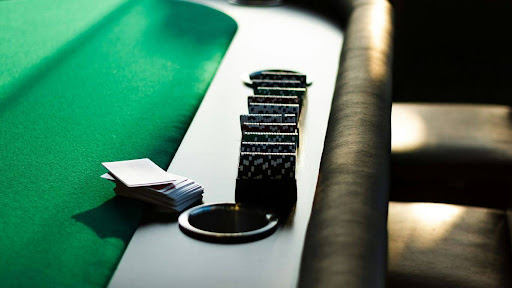
So, you’re thinking about putting your chips on green. It’s a bold move, for sure. When the ball lands on 0 or 00, it’s a win for the house on most bets, but if you’ve specifically bet on green, you’re looking at a nice payout. The question is, should you actually do it?
Let’s break it down. Betting on green is essentially a straight-up bet on a single number (or two, if you’re playing American roulette and betting on both 0 and 00). This means the odds aren’t exactly in your favor. In American roulette, with 38 pockets in total, the chance of hitting green is about 1 in 38 for a single zero or 00, and about 1 in 19 if you bet on both. European roulette, with its single zero and 37 pockets, offers a slightly better, but still slim, chance of about 1 in 37.
Here’s a quick look at the payouts for a straight bet on green:
| Roulette Type | Pockets | Odds of Hitting Green | Payout (for 1 unit bet) |
| American Roulette | 38 | 1 in 38 (for 0 or 00) | 35 to 1 |
| American Roulette | 38 | 1 in 19 (for 0 and 00) | 17 to 1 (split bet) |
| European Roulette | 37 | 1 in 37 (for 0) | 35 to 1 |
As you can see, the payout is high, which is tempting. But remember, you’re much more likely to lose your bet than win it. This is why the green pockets exist – they’re the casino’s built-in advantage, the house edge. When the ball lands on green, most other bets (like red/black, odd/even, high/low) lose.
So, when might it make sense to bet on green?
- When you’re playing for fun and have no money on the line. Online demo versions of roulette are perfect for this. You can try betting on green all you want without any risk.
- When you’re using very small chips and are okay with losing that amount. Think of it as paying for a moment of excitement. If you bet a dollar and lose, it’s not the end of the world.
- When you’re feeling lucky and want to chase a big payout. Sometimes, you just want to go for the long shot. Just be prepared for the high probability of losing.
Betting on green is a high-risk, high-reward proposition. It’s not a strategy for consistent winning, but rather a gamble for a significant payout. Understand the odds and only bet what you can afford to lose, or better yet, practice with play money.
Ultimately, betting on green is more about the thrill of a big win than a sound betting strategy. If you’re playing with real money and aiming for steady wins, it’s generally best to stick to bets with better odds. But if you’re looking for a bit of excitement and a chance at a massive payout, and you’re comfortable with the risk, then go ahead and place that green bet. Just don’t be surprised if the house wins more often than not.
What Happens If You Hit Green in Roulette
So, you’ve spun the wheel, and the ball has landed on green. What does this mean for your bet? It really depends on what you bet on in the first place. If you placed a straight-up bet directly on ‘0’ or ’00’ (in American Roulette), then congratulations! You’ve hit the jackpot for that specific wager. The payout for landing on a single green number is the same as hitting any other single number on the wheel.
In American Roulette, with its two green pockets (0 and 00), the odds of hitting green on a straight-up bet are 36 to 1. This means for every dollar you bet, you could win $36. For example, a $10 bet on green could net you $360. European Roulette, with only one green pocket (0), offers odds of 35 to 1 for a straight-up green bet.
However, if you were betting on something else, like red or black, odd or even, or high or low, hitting green is generally not good news. These are known as outside bets, and they cover a large portion of the numbers on the wheel. When the ball lands on green, these bets typically lose. It’s the house’s way of maintaining its edge. Think of it this way:
- Red/Black Bets: Lose if green hits.
- Odd/Even Bets: Lose if green hits.
- High/Low Bets: Lose if green hits.
The presence of the green pockets is what gives the casino its advantage in roulette. Without them, the game would be much closer to a 50/50 proposition on many bets.
There are some special rules in certain European variations that can soften the blow if the ball lands on green for even-money bets. The ‘La Partage’ rule means you get half your bet back, and the ‘En Prison’ rule means your bet is held over for the next spin. These rules aren’t common in American Roulette, though.
Ultimately, betting on green is a high-risk, high-reward proposition. The odds are lower than many other bets, but the payout is significantly higher if you win. It’s a gamble that can pay off handsomely, but it’s also important to remember that you’re more likely to lose than win when placing a bet directly on green. If you’re playing online, you might find variations like Zoom Roulette that offer different visual experiences but generally follow these same payout structures for green. Always play responsibly and understand the odds before you place your chips.
Frequently Asked Questions
What happens when the roulette ball lands on green?
When the ball lands on a green pocket (either ‘0’ or ’00’ in American Roulette, or just ‘0’ in European Roulette), it means that any bets placed on red/black, odd/even, or high/low numbers will lose. However, if you specifically bet on the green number itself, you win!
What is the payout for betting on green?
If you bet on a single green number (like ‘0’ or ’00’) and win, the payout is typically 35 to 1. This means for every dollar you bet, you get $35 back, plus your original dollar. So, a $10 bet winning would give you $350 plus your $10 back.
How does the green pocket affect outside bets?
Green pockets are bad news for outside bets like red or black, odd or even, or high or low. These bets cover a large group of numbers, but they don’t include the green zero(s). So, if the ball lands on green, all these outside bets lose automatically.
Is betting on green a good strategy?
Betting on green is a high-risk, high-reward move. The chances of hitting green are lower than hitting other numbers, but the payout is higher. It’s often seen as a gamble for players who enjoy taking risks or playing for fun, especially when playing with free online versions.
What’s the difference between green in American and European Roulette?
American Roulette has two green pockets: ‘0’ and ’00’. This gives the casino a higher advantage (about 5.26%). European Roulette only has one green pocket, ‘0’, making the casino’s advantage lower (about 2.7%) and giving players slightly better odds.
Can you bet on both green numbers at once?
Yes, in American Roulette, you can place a ‘split bet’ on both ‘0’ and ’00’ at the same time. You do this by placing your chips on the line between the two green pockets. This increases your chances of winning compared to betting on just one, but the payout is lower, usually around 17 to 1.
What are the ‘La Partage’ and ‘En Prison’ rules regarding green?
These are special rules found in some European or French Roulette games. If the ball lands on green (‘0’), ‘La Partage’ means you get half of your outside bet back. ‘En Prison’ means your bet is ‘imprisoned’ and stays for the next spin; if it wins, you get your stake back, but if it loses, you lose it.
Why does the green pocket exist in roulette?
The green pocket(s) are there to give the casino its ‘house edge.’ This is the built-in advantage that ensures the casino makes money over the long run. Without the green zero(s), the game would be much closer to a 50/50 chance for many bets, making it less profitable for the casino.
Daniel Chase is a seasoned casino analyst and iGaming writer with over 10 years of experience in the online gambling industry. He specializes in game strategy, casino odds, and player-focused reviews. Daniel is passionate about helping players make smarter decisions through transparency, real data, and honest insight.
